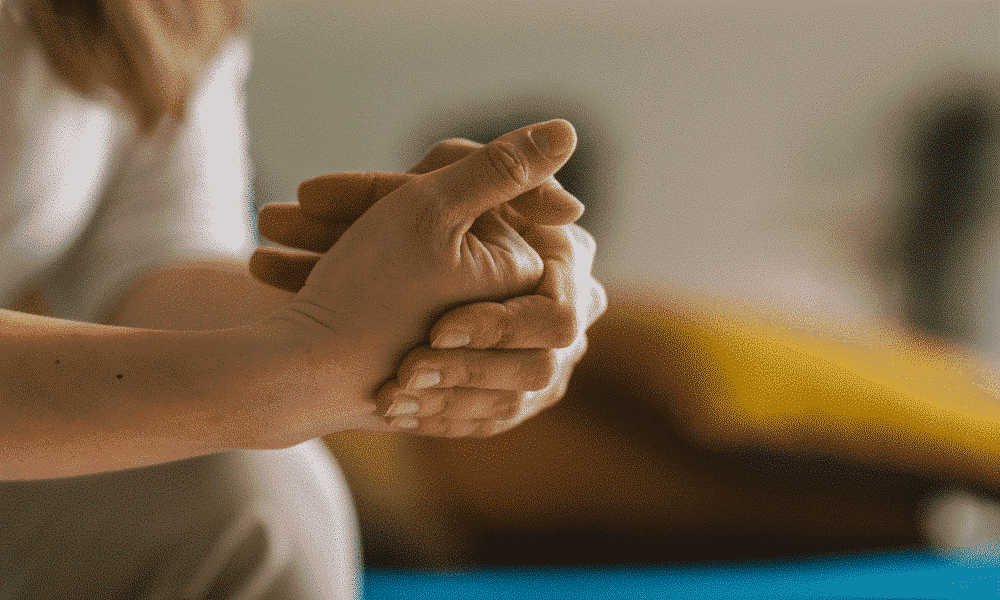
Caring for a loved one with a chronic condition can be incredibly challenging. As a caregiver, you are at risk of emotional exhaustion, stress and anxiety, which can manifest in countless different ways. You no doubt have a lot of responsibility as a caregiver and it can be hard to find the time to look after yourself too. However, there are active steps you can take that could help you to manage the symptoms of caregiver fatigue. We want to remind you of the wonderful job you’re doing as a caregiver. Difficult feelings are normal and natural and it’s okay to feel frustrated, lonely, and even angry at times. It’s important to learn how to respond to your emotions in a healthy way and accept that you’ll have difficult days too. In this article, we’ll discuss the very real issue of caregiver fatigue and provide you with tips on how to live well so you can look after yourself and your loved one. What is caregiver fatigue? And what causes it? Caregiver fatigue (sometimes called caregiver burnout) can take the form of physical, emotional, or mental exhaustion: in other words, being so tired that you can no longer do things properly. Heidi Donovan, a professor of health and community systems at the University of Pittsburgh School of Nursing, was quoted by USA News Today as saying: “I think of caregiver fatigue as that overwhelming sense of physical tiredness really that comes from either the physical or mental demands of providing care to a loved one […] I think a lot of it’s the kind of strain that comes from the feeling of responsibility towards somebody else.” It’s important to recognize that family caregivers are not the same as social workers. Family caregivers are not paid, don’t necessarily receive any formal training, and might be completely alone when it comes to providing support. Heather, who is a caregiver for her husband, said: “I had been caring for my partner with Long COVID for a few months when a friend whose partner had cancer asked, “So how’s that caregiver fatigue going for you?” It blew my mind. I had no idea my feelings were common enough to have a name. Just knowing that other people were as tired of caregiving as I was changed everything.” Caregiver fatigue is a very real problem. It’s important to remember that you are never alone and that there are people and services out there that can help. Some caregiving numbers. Recent data suggests that there are 53 million people in the US providing unpaid care to family members or friends. 41.8 million of these caregivers are caring for someone over the age of 50. The same study found that the average caregiver offers 23.7 hours of care a week. However, this number drastically increases to 37.4 hours a week when the caregiver lives in the same house as the care recipient. What causes caregiver fatigue? Unrealistic expectations. One of the biggest contributors to mental exhaustion for caregivers is the unattainable expectations and demands. Many of these are placed on caregivers by themselves rather than their loved one. It’s never your fault if you find yourself suffering from caregiver fatigue. But, if you can identify your symptoms, you can start taking action to manage the expectations you may have put on yourself. While the unattainable expectations and demands can come from the caregivers themselves, they can also come from those around them – from the person receiving care to other family members, wider society, and sometimes even medical professionals. Role confusion. How much is expected of you? Is it your job? How do you negotiate between this and your other roles in their life? You may well find yourself asking these questions as you try to figure out your role as a carer. When you become someone’s carer, your relationship might change forever. This can be difficult to accept sometimes. But it’s not always as bad as people think. Heather, who is a caregiver for her husband, said: “Becoming a caregiver for a loved one inherently changes your relationship forever. There’s no way around that. But it doesn’t have to be a change for the worse. Think about how you can build communication and trust with one another. There will be new moments for humor and new intimacies that you would never have experienced otherwise. Some days it will be impossible to see the positives, but know that some do exist.” Not having control. Not having control of your loved one’s health deterioration or dealing with a lack of money or time to effectively care for someone can be incredibly stressful. The sense of losing control can also be a contributing factor to caregiver fatigue. A person’s social and economic background can magnify the effects of caregiver fatigue. This is sometimes called social determinants of health. People from certain class and racial backgrounds might be disproportionately affected by the symptoms of caregiver fatigue. For example, there are some people who are caring for a loved one but can afford a little bit of extra help. Some people might be able to afford adjusting mobility beds while others might not. As a caregiver, instead of focusing on what you can’t control, try to focus on what you can – even if it’s something small like picking up your loved one’s medication from the doctor. The little things in life can often have a big impact on our mental wellbeing. Supporting someone with a condition that affects their behavior. It can be very emotionally challenging to care for someone who is living with a condition which affects their behavior. For example, a person who needs care but adamantly believes that they don’t – this might be true of a loved one with dementia. When someone is refusing care, but can’t live independently, it can be very challenging for the caregiver. This can result in emotional and mental exhaustion which is one of the symptoms of caregiver fatigue. Emily, a carer, who was in a situation like this said: “It’s like you’re trying to help them [the care recipient] while also battling against them. You feel torn between your feelings of sadness and frustration. You end up questioning yourself and asking: is this the right thing to do?” It’s important to be aware of the causes of caregiver fatigue so you can take action to prevent burnout. Signs of caregiver burnout. The following are some of the symptoms of caregiver burnout to look out for: Feeling sad, hopeless or depressed. Changes in eating habits: either eating too much or too little, and potentially having an unhealthy change in weight. Feeling exhausted: both physically or emotionally. Feeling grumpier than usual. Wanting to hurt or harm the person you’re caring for or yourself. Feeling unwell and being unable to do things you would usually be able to do. Altered sleeping habits: either sleeping more or less to an unhealthy degree. Finding that habits are changing: this could even be losing interest in a hobby. Spending less time with friends, family and loved ones. Caregiving and guilt. Guilt is a big emotion which caregivers often find themselves dealing with. You may find yourself wondering things like: Am I doing enough? Do other people do more? Am I helping or just making things worse? There are lots of articles online about caregiver guilt which offer advice. Here are our top tips: Acknowledge and accept the guilt – feeling guilty is a common response and not something you should be ashamed of. Look at the bigger picture – the situation won’t last forever. Be confident in knowing that you are making the best decisions for you and your loved one – constantly second guessing your decisions isn’t helpful so try and have faith in your decisions. Accept that you’re not perfect – we all have flaws and emotions that we probably shouldn’t. Prioritise yourself – this might instinctively feel wrong, but, remember, on flights we’re always told to put on our own oxygen masks before helping others. Reach out for support from family and friends – know that you’re not alone in your caregiver journey and that there are people who can help. It’s important to accept that however you’re feeling is valid. Caregivers often feel resentment and anger – these are normal emotional responses and you shouldn’t feel bad for having them. Try not to feel guilty for being sad or feeling like you’re not doing enough. It’s ok to struggle and it’s ok to have bad days. We’re all human after all. Steps to living well as a caregiver. Maintaining healthy relationships with friends and family members. It can be tricky to maintain relationships with your loved ones, especially when you feel like you’ve got enough on your plate already. However, it’s important to try and maintain positive relationships with friends and family members as they can provide you with a sense of support and encouragement during your caregiver journey. Try and make an effort to send messages to people – even if it’s simply ‘I hope you’re having a good day’. Keeping in touch and communicating often keeps us afloat. Remember, if you want to, it is ok to reach out to family and friends to ask for help. People probably won’t hold it against you and you might be surprised at how many people want to help, but might not know how to offer. Join a support group. Whether it’s a virtual meeting or simply joining a Facebook group, there are plenty of online caregiver support groups who can advise you on matters like state support, realistic caregiver responsibilities, and nursing homes in your area. If you’re joining an online social media group, it’s always a good idea to find a group which is in your area – this means that people will be aware of the local laws as well as local care centres and charities who might be able to offer you some support. Sometimes it can be really valuable to talk with someone who has been through the same experience and can understand what you are going through. Also, when you help others, it might even help you better understand your own position. Practice self-care. If you don’t look after yourself then you probably won’t be in a condition to look after someone else. As a carer, it is important to remember to make time for you and the things which make your life good: maybe that’s writing a journal, going for a walk, or finding an evening to watch TV. Your identity is not defined by the care you give. So remember to make time for yourself. Heather said: “The hardest thing about being a caregiver is self-care. You know it’s true, but you still can’t bring yourself to do it, right? The first time I went to a yoga class after my partner got sick, I cried out of guilt. But you have to take care of yourself in order to take care of others. If you don’t build yourself up, there’s nothing left to give.” Here at Sidekick, we strongly believe in the practice of mindfulness. This can be a great way of managing the symptoms of caregiver fatigue. We hope that this article has helped familiarize you with the symptoms of caregiver fatigue so that you can recognize and respond to them in a healthy way. The key to providing the best care to your loved one is taking care of yourself first. You’ve got this. “Some days it will be impossible to see the positives, but know that some do exist.” Heather, a caregiver.

